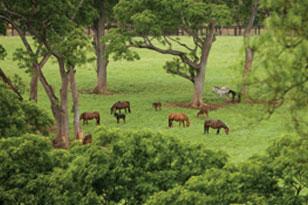Introducing golden boy Sepoy

Like a father choosing between two much-loved sons, Snowden’s decision couldn't have been an easy one to make but it underlines the extraordinary success of Sepoy throughout a 14-run career which garnered ten victories, four of which came at Group One level. Champion two-year-old status is not easily earned and the Elusive Quality colt was out early in his juvenile season, building a CV which would lead to the title and a 124+ rating from Timeform, the highest earned by a two-year-old for an entire decade.
These accolades were achieved on the back of his six starts at two, in which he was beaten just once when second in the G2 Todman Stakes. If he faltered, it was only by three-quarters of a length on unsuitably heavy ground, and he would make amends for not landing the Slipper trial by winning the G1 Golden Slipper itself, getting the better of the outstanding filly Mosheen by two lengths over the six furlongs.
British bloodstock agent Grant Pritchard-Gordon, who has had a long association with the Australian racing scene and whose son Sam trains in Victoria, was an early fan of the Darley colour-bearer. He says: “Sepoy always impressed me with his precocity to win good races so early in the season and then the maturity to completely outclass the Golden Slipper field at the end of his two-year-old career.”
That climax to his debut season in Sydney’s premier juvenile contest came after Sepoy had already won Melbourne’s equivalent, the G1 Blue Diamond Stakes, by an emphatic four and a half lengths.
Resuming early in his three-year-old season, Sepoy was quickly back to winning ways, taking the Listed Vain Stakes just a fortnight into the new season. Through the following two months he would add two Group One and two Group Two victories to his increasingly impressive record.
His win in the G1 Manikato Stakes emulated the great horse for whom the race is named as he became the first Golden Slipper winner since Manikato to win a weight-for-age Group One as a three-year-old, while the last three-year-old to land the Manikato Stakes was none other than the great Redoute’s Choice, in 1999.
Having slightly missed the start, Sepoy was sent into overdrive by Kerrin McEvoy to retain his position on the rails but he was soon into his stride at the head of proceedings, punishing his rivals with a frenetic gallop that would see him record a time of 1.11.08 with the Moonee Valley turf listed as slow. Two and a quarter lengths clear of the field at the line, Sepoy had Sister Madly and the outstanding eight-time Group 1 winner More Joyous behind him in the minor places.
“He had barely turned three when he beat the older horses in the Manikato,” recalls bloodstock agent Dermot Farrington. “Australia will have to wait for a while to see a two- or three-year-old colt as good as Sepoy. He really made a lot of very good horses look like B grade. From his first 11 starts he had 10 wins, four of them in Group 1 races, mostly never coming off the bridle.”
Adding another top-flight six-furlong race to his record when winning the G1 Coolmore Stud Stakes from Foxwedge, Sepoy was named the World Champion three-year-old sprinter and yet another impressive rating from the boys at Timeform, who awarded him a mark of 129.
Of course, such success is rarely an accident of birth and Sepoy was bred to be a champion. From one of the best families in the Australian studbook, his dam, the Danehill mare Watchful, is a full-sister to the G1 Queensland Derby winner Camarena, who has herself bred a Group One winner by Elusive Quality, Sepoy’s very close relative, the top-class juvenile Camarilla.
Watchful’s dam Canny Miss, by Marscay, is a half-sister to the Group One-winning duo of Canny Lad and Canny Lass, the former another Champion two-year-old who became a stalwart of the Woodlands Stud stallion ranks and broodmare sire of Redoute’s Choice. Elusive Quality, of course, needs no introduction in Europe despite having spent his entire northern hemisphere stud career in Kentucky. His most accomplished European son is Raven’s Pass, who is already off the mark as a Stakes-producing sire with his first-crop runners this season, while Group winners Elusive Kate, Certify and Questioning have done a great job in enhancing his reputation on this side of the Atlantic in recent seasons.
Sepoy’s roots are firmly planted in Australian soil but he possessed an extraordinary level of ability which is easily translated the world over.
We’ll leave the last word to Grant Pritchard-Gordon. “Sepoy was a class apart from horses that subsequently proved themselves to be high-class performers when his departure for Dubai left room at the top.” Enough said.

